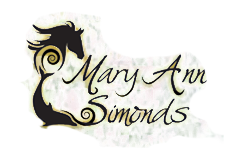When it comes to keeping insects off, nature actually designed the horse fairly well.Long manes with a forelock over the eyes and a tail that can swish and reach the shoulder, gives the horse good coverage.
by B.S., M.A. Mary Ann C. Simonds
ShareThis Facebook Tweet LinkedIn Google + Care2 Pinterest Email
When it comes to keeping insects off, nature actually designed the horse fairly well.Long manes with a forelock over the eyes and a tail that can swish and reach the shoulder, gives the horse good coverage. However, since people have begun controlling genetics, not nature, recent breeds are not as effective at insect control as the older, thick-skinned breeds.
Here’s an obvious example: my two wild horses graze peacefully while my thoroughbred shakes his head, trying to keep it near my mustangs’ tails to avoid annoying insects.
Watching to see which horses have flies and where they land can give you lots of information about your horse. Insects in general are attracted to energy fields considered “out of balance” or even “Noxious” (harmful) to humans and other animals. Flies will be more attracted to people and horses with unbalanced energy. When a friend stayed with me for a couple of months last summer with her event horses, we noticed that one horse was covered with flies. That was unusual for my barn. On the right side of his neck, between the third and fourth cervical vertebrae, there was a patch of flies the size of a silver dollar. They created a bald spot on the horse. Observing this, we checked him and found him to be “out” in the third and fourth cervical vertebrae. After working on his neck to re-balance his energy flow, the flies quit bothering his neck.
Generally speaking, if you understand insect ecology, use biological control, and have a balanced and healthy horse, little or no fly sprays should be needed. However, if you feel you must use fly sprays, or want your horse to smell good, natural essential oil formulations offer a variety of wonderful insect controls. Bear in mind, no matter which formulas you use, insects will adapt to them in a relatively short time, so you need to rotate your sprays in a random order to not set a pattern that the hardy insects will be able to figure out and adapt to.
Your fly sprays can be sprayed as a liquid, or made into a lotion. I find that rubbing on a lotion lasts longer. One that I found that works wonderfully was developed to deal with the jungles of West Palm Beach, Florida, appropriately named “Junglepoo.” Another option is to rub apple cider vinegar into the hooves and legs, or feed your horse vinegar or garlic (Equilite’s Garl+C) during the fly season–his sweat will act as a natural repellent.
The following essential oils are known to be unpleasant to insects. They should be mixed with water or a lotion, or blended with oils so that they are diluted in strength. Straight essential oils are too concentrated to be used directly on an animal and may cause toxic side effects. I recommend not mixing more than two or three oils together because this can cancel out the properties of the oil.
When mixing a lotion or wipe-on insect repellent, use a natural aloe vera base lotion diluted with 40-50% water or Witch Hazel. The Witch Hazel helps to keep the skin from clogging. If making a spray, use one-third lotion, one-third witch hazel, and one-third water, with one-quarter to one-half ounce of essential oils, depending upon the oil. This can make 16-32 ounces of spray, depending upon how strong you need to make your repellent.
Here’s a list of insect repellent oils and recipe’s for you to try. Most of the essential oils can be purchased in you local health food store.
Insect Repellent Essential Oils :
Geranium
Eucalyptus
Lemongrass
Orange
Cedarwood
Juniper
Rosemary
Lavender
Thyme
Garlic
Tea Tree
Peppermint
Neem
Lemon
Pine
Clove
Insect Repellent Blends: If making a lotion, add less water
Blend #1:
1/2 oz. Lavender
8 oz. Aloe Vera Lotion
1/8 oz. Rosemary
8 oz. Water
Blend # 2:
8 oz. Vinegar
1 oz. Garlic Oil or 1 Bulb
Crushed thru cheese cloth
(use straight or mix with unscented Aloe Vera Lotion)
Blend # 3:
1/2 oz. Lemongrass
1/8 oz. Peppermint
8 oz. Aloe Vera Lotion
8 oz. Water
Mary Ann Simonds
Blend # 4:
1/2 oz Cedarwood
1/4 oz. Juniper
8 oz. Lotion
8 oz. Water
Mary Ann C. Simonds, B.S., M.A. is an Equine Behavior Consultant and Equine Health Educator.Ý She is the owner of “Horse Spirit,” a holistic health product company that makes flower essences, aromatherapy blends, and magnetic bell boots.Ý Mary Ann consults and gives clinics nationwide.
Tags
aromatherapynatural fly & insect controloilsrepelantholistichorse
by B.S., M.A. Mary Ann C. Simonds
ShareThis Facebook Tweet LinkedIn Google + Care2 Pinterest Email
Comments
More Equine Wellness Articles
Is your horse bucking, rearing, or generally misbehaving? Read up on the much-overlooked issue of pain in horses, as it relates to “misbehavior.” Read more
Hay and pasture contain two to four times more potassium than the horse needs but it has nothing to do with insulin. Read more
Most horse owners deal with lameness on occasion, but what happens if your horse is diagnosed with pedal osteitis? How can you reduce the pain and inflammation naturally?Read more
As an adaptogen, American ginseng improves immune, endocrine, and nervous system function. It is often included in herbal blends to strengthen immune function, for dry coughs, allergies, insulin resistance, and improving resistance to upper respirato Read more
Tag Cloud
- horse health
- equine therapy
- equine health
- equine nutrition
- horses
- holistic horse
- horse
- holistic medicine
- equine massage therapy
- nutrition
